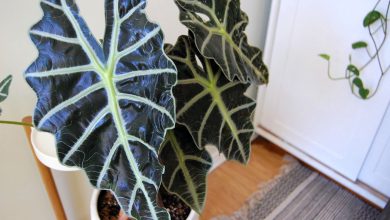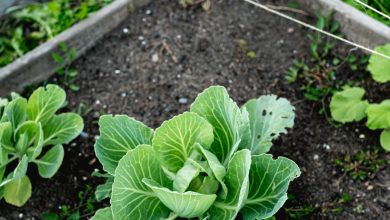Tree of Love: [Cultivation, Irrigation, Care, Pests and Diseases]
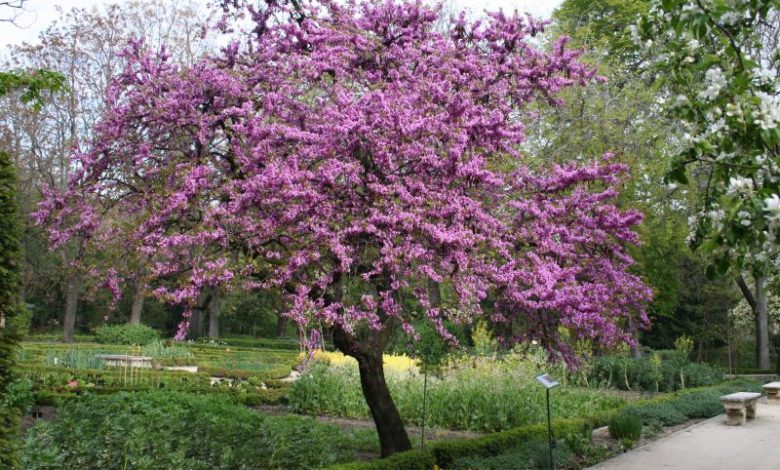
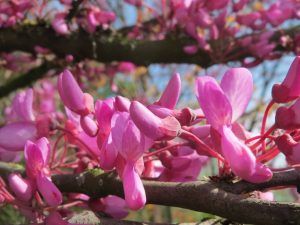 The tree of love is an arboreal species from Southwest and Southeast Europe and West Asia. Its cultivation has spread to other regions of the world, such as Africa and North America.
The tree of love is an arboreal species from Southwest and Southeast Europe and West Asia. Its cultivation has spread to other regions of the world, such as Africa and North America.
Its name comes from the Greek word kerkis because its sheath was very similar to a weaver’s shuttle.
Due to its beauty, it is frequently used in landscaping and gardening projects as ornamental trees. In addition, it is especially recognized for its beautiful pink heart-shaped flowers.
In some countries it is also called the Judas tree due to the belief that Judas Iscariot hanged himself on one of these after betraying Jesus. However, it is thought that this is actually a decomposition of the term «Judean tree».
Important points when planting a tree of love:
- Scientific name: Cercis siliquastrum L.
- Common name: Cercis, tree of love, Judas tree, Judea tree, redbud, crazy carob tree.
- Height: 6 to 8 meters.
- Light Need: Sun exposure and partial shade.
- Temperature: Warm and temperate climates.
- Irrigation: Moderate.
- Fertilizer: Natural and artificial fertilizers.
What characteristics does the tree of love have?
The Cercis siliquastrum is a deciduous tree that develops a trunk with smooth bark but that becomes rough and cracked over time. It reaches between 5 and 10 meters in height, although in suitable conditions it can exceed 12 meters.
Its crown is irregular like its branches. The leaves of the tree of love are simple and alternate, ranging in size from 7 to 12 centimeters in length. Its flowers emerge in the months of March and April, before the development of the leaves.

They are pink, heart-shaped and are grouped in small clusters of 3 to 6 flowers. Likewise, the tree of love produces a reddish-brown ornamental legume which can measure up to 15 centimeters in length. The legumes must be harvested after they are ripe so that they are not damaged by insects.
When to plant the tree of love?
When we are in a warm area, the love tree should be planted during the spring as the young growth is sensitive to frost. In cool areas it should be planted in the fall.
Specialists recommend letting the seedlings grow in a greenhouse during their first winter. However, the younger the tree is when planted permanently, the more successful it will be in developing.
Where to plant the tree of love?
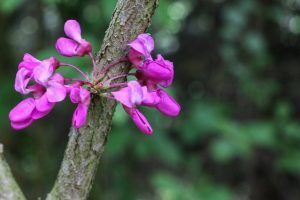 The love tree does best in warm climates, in places where it can receive direct sunlight for 6 or more hours a day.
The love tree does best in warm climates, in places where it can receive direct sunlight for 6 or more hours a day.
Or, in partial shade, direct sunlight for 2 to 6 hours. Likewise, it is recommended to plant it in places protected from strong gusts of wind since the stems of the tree can break.
How to prepare the land?
The Cercis siliquastrum is not demanding, it can grow in almost any type of soil, especially in calcareous or siliceous soils, with a neutral pH and well drained, as it does not support excess humidity or waterlogging.
However, if you want to have more success when planting a tree of this class, it is recommended to use a substrate composed of clay, silt and sand.

How do we water the tree of love?
When young, the love tree requires constant but moderate watering. As it grows, watering should be reduced since excess watering, or flooding, can affect its development as they are very sensitive to humidity.

On the other hand, although the Judean tree tolerates drought, it is important to water the tree more frequently during hot seasons so that it does not lose its strength.
How often do we water the tree of love?
It is recommended to water 1 or 2 times a week in a moderate way, depending on the climate and the level of soil moisture.
How to plant a tree of love step by step?
The process to germinate the seed of the tree of love is not simple since the seeds are of internal dormancy or physical dormancy; that is, they need to break the plant tissue belonging to the endosperm and impermeable seed coat to obtain rapid and uniform germination.
One of the most used and effective methods consists of the following steps:
- Boil water in a container with the ratio 1:10, 1 part of seeds for 10 parts of water, and remove from heat.
- Pour and submerge the seeds immediately in the container for a period of 12 to 24 hours.
- Drain the seeds and place them in a ventilated environment away from direct sun exposure and sow immediately.
There are other procedures under which the seed of the tree of love can germinate; however, some require more specialized substances or procedures. Among them are the following:
- Mechanical scarifying.
- Mechanical scarifying in conjunction with cold stratification.
- Scarified with concentrated sulfuric acid.
What care does the tree of love need?
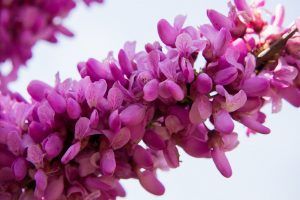 The love tree is renowned for its low maintenance. However, fertilizing before its flowering period, together with a good irrigation record, are important measures that help the tree reach its maximum splendor.
The love tree is renowned for its low maintenance. However, fertilizing before its flowering period, together with a good irrigation record, are important measures that help the tree reach its maximum splendor.
It is recommended to plant them permanently when they are young, preferably in the month of May, and keep watering them until they adapt to their new site.
Transplants should be avoided because the tree of love adapts poorly, especially when they are adult trees. On the other hand, although pruning is not a requirement, it is beneficial to carry it out, especially when it comes to adult trees that have lost volume and quality in their growth. bloom.
What pests and diseases affect the tree of love?
The love tree is susceptible to coral spot fungi, which grow in areas with cool, humid summers. Another type of disease that affects this species is bark canker (Nectria cinnabarina), as well as wilt caused by Verticillium dahliae.

Within the pests, there may be affectations by aphids and mealybugs.
How long does the tree of love live?
It has a good life expectancy of around 100 years when it gets the ideal care.
How long does it take to grow the tree of love?
It takes an average of 20 years to reach its maximum height and thus be considered an adult tree.
How long does it take to produce fruit?
It all depends on the planting method used. When working with a seedling bought in a nursery, it will be from 3 years old.
In case of making it from seeds, it may take up to 5 years to achieve it.
Can it be grown in a pot?
It is possible to keep it in a pot when it is young, but it is not recommended for mature trees.
The main reason is that it will not allow it to develop to its maximum capacity and offer a flowering based on it.
Likewise, it must be considered that it is a species that prefers rocky soils and that will not be obtained in pots.
How many times does the tree of love produce fruit?
It produces fruit once a year, just after the start of autumn, which is when the flowers that adorned spring and summer begin to fall.
Should the tree of love be pollinated to obtain fruit?
Yes, pollination is carried out by pollinating insects that are attracted to its striking flowers.
How cold can the tree of love tolerate?
The tree of love must be in environments whose temperature does not drop below -10 ° C to avoid problems with its health.
How many love trees can be planted per hectare?
Due to the characteristics of the tree, it would be possible to admit between 150 and 200 trees per hectare.
What kind of fertilizer does the tree of love need?
It does well with both natural and artificial fertilizers.
Working at the beginning of flowering with an NPK fertilizer with a higher level of potassium and phosphorus will help make the flowering results more impressive.
How much heat and/or drought can the tree of love tolerate?
The heat suits you. You can live peacefully in environments around 30° C.
With the drought he has no major problems.
References
- https://www.agromatica.es/cultivo-de-cercis-siliquastrum/
- https://previa.uclm.es/area/ing_rural/Proyectos/PedroJoseDeLosAngeles/02f_EspeciesVegetales.pdf
- https://plantas-ornamentales.org/arboles/arbol-del-amor/
- http://www.murcia.es/medio-ambiente/parquesyjardines/material/Cercis%20siliquastrum.pdf
- http://www.missouribotanicalgarden.org/PlantFinder/PlantFinderDetails.aspx?taxonid=280444
- https://www.researchgate.net/profile/Natalia_Acosta9/publication/242618995_DIAGNOSTICO_DE_ENFERMEDADES_EN_VIVERO_FORESTAL_RESULTADOS_PRELIMINARES/links/57ea850408aed3a3e08aaaf6.pdf
- http://agroambient.gva.es/documents/170053765/171648623/Manual+de+propagación+de+arboles+y+arbustos+de+ribera./ba346aeb-6588-4843-a813-d16ffd59080b
- http://www.rjb.csic.es/jardinbotanico/ficheros/documentos/pdf/pubinv/MSG/Cercis_siliquastrum.pdf

![Photo of Lantana Cuttings: [Grafts, Time, Rooting and Planting]](https://www.complete-gardening.com/wp-content/uploads/2022/08/lantana-cuttings-grafts-time-rooting-and-planting-390x220.jpg)
![Photo of How to Plant Bamboo: Guide that includes [17 Steps + Images]](https://www.complete-gardening.com/wp-content/uploads/2022/08/how-to-plant-bamboo-guide-that-includes-17-steps-images-390x220.jpg)
